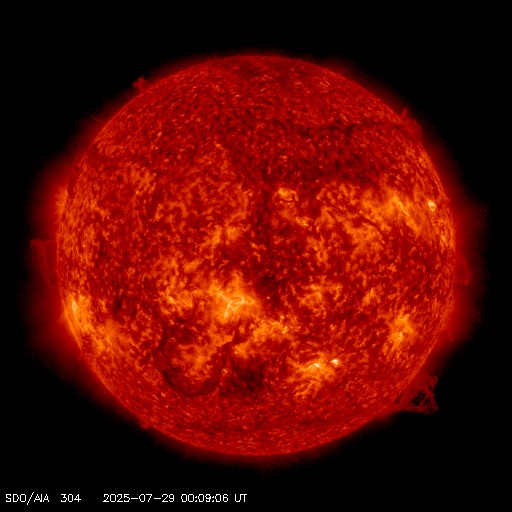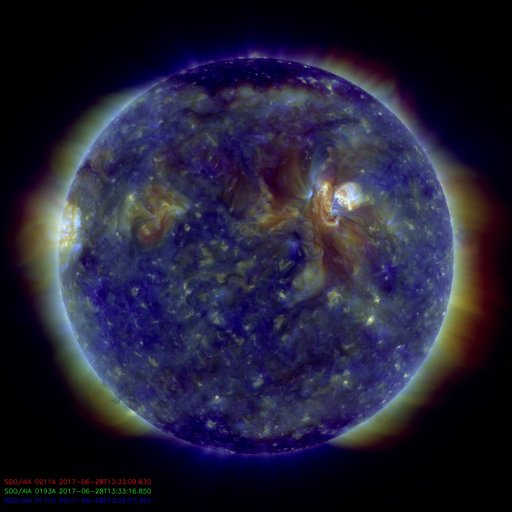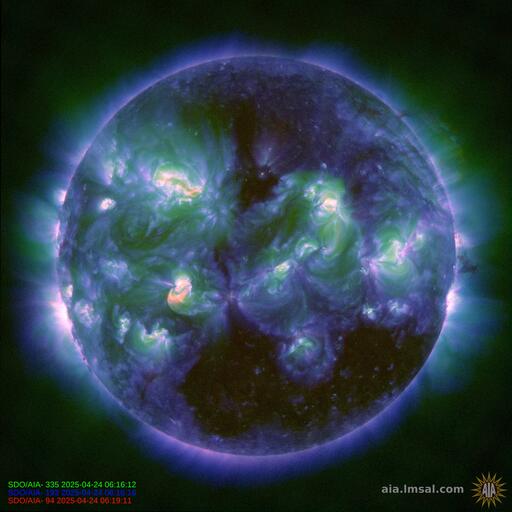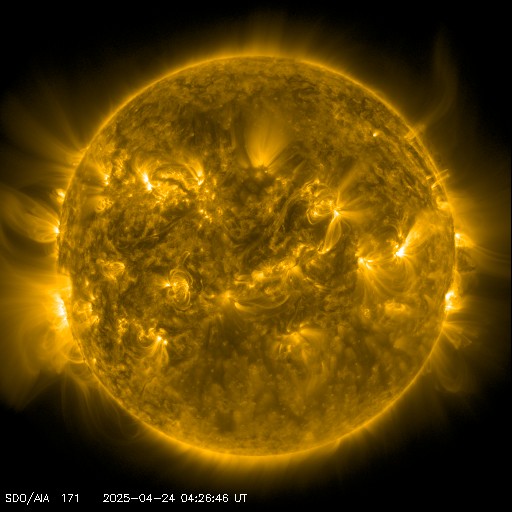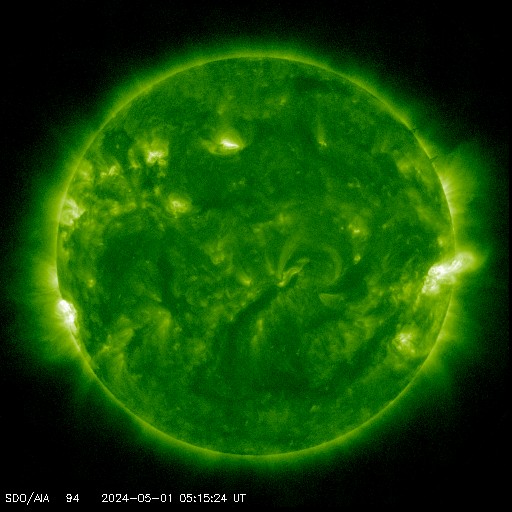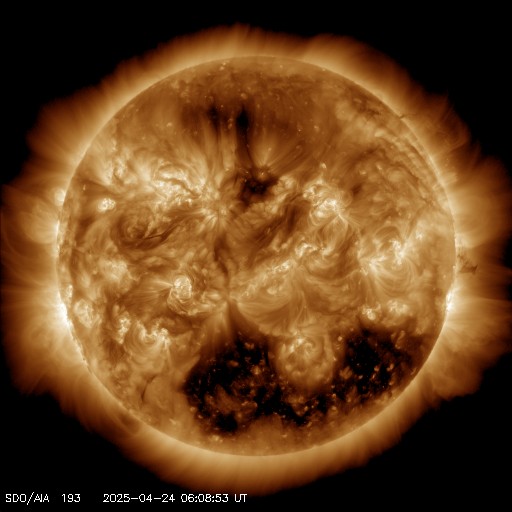The chance of a SEP (Solar Energetic Particle),or Proton event is on the rise. A strong magnetic connection of the Earth at Sunspot Region 1402 during yesterdays LDE M3.2 flare increased the precipitation of a stream of these particles to start bombarding Earths Ionosphere several hours later.When solar protons enter the Earth's magnetosphere where the magnetic fields become stronger than the solar magnetic fields, they are guided by the Earth's magnetic field into the polar regions where the majority of the Earth's magnetic field lines enter and exit. These protons then release their energy through the process of ionization. The Graph to the left shows the current level of the ACE Spacecraft's readings of High Energy Protons.
The majority of the energy is extinguished in the extreme lower region of the ionosphere (around 50-80 km in altitude). This area is particularly important to radio communications because this is the area where most of the absorption of radio signals energy occurs. The enhanced ionization produced by incoming energetic protons increases the absorption levels in the lower ionosphere and can have the effect of completely blocking all ionospheric radio communications through the polar regions. Such events are known as Polar Cap Absorption events (or PCAs). These events commence and last as long as the energy of incoming protons at approximately greater than 10 MeV exceeds roughly 10 pfu. This graph shows the frequencies that are currently being affected, and where.

